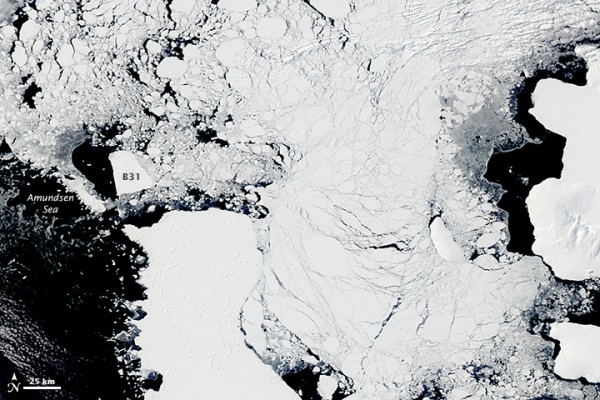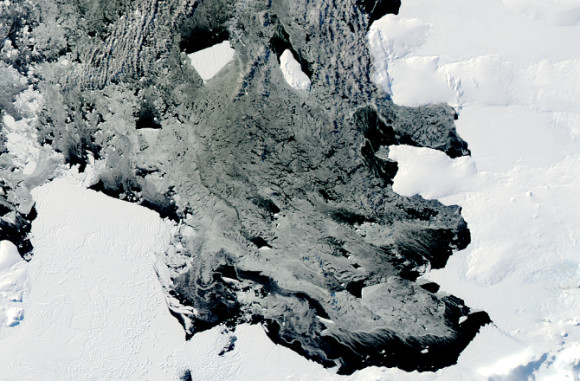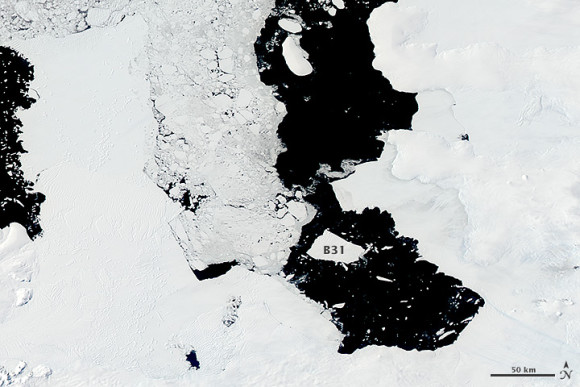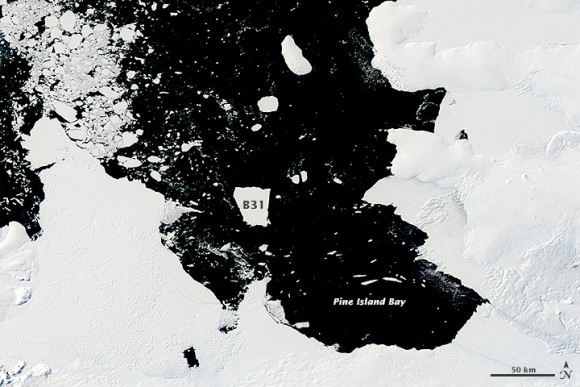
Winter has lifted from Antarctica’s Pine Island Bay, so that passing satellites can once again acquire sunlit views of massive iceberg B31 as it drifts in the Amundsen Sea. NASA has been tracking this iceberg – an ice island, really – since it separated from the front of Antarctica’s Pine Island Glacier a year ago (November 2013). It’s 240 square miles (over 600 square kilometers), in contrast to about 23 square miles for New York’s Manhattan Island. When southern winter fell around May 2014, darkness came to this region of Earth and the iceberg could not be seen for six months. It was thought then it would likely be swept up in the swift currents of the Southern Ocean, but, for now, it’s still in the Amundsen Sea – moving west – free now of surrounding debris and sea ice. Scientists expect that the berg will continue moving west.
Last April, just before winter darkness fell in Antarctica, Kelly Brunt, a glaciologist at NASA’s Goddard Space Flight Center, noted:
Iceberg calving is a very normal process. However, the detachment rift, or crack, that created this iceberg was well upstream of the 30-year average calving front of Pine Island Glacier, so this a region that warrants monitoring.
Pine Island Glacier itself – the source of the massive iceberg – has been the subject of intense study in the past several decades. Scientists speak of this glacier as the weak underbelly of the West Antarctic Ice Sheet. The glacier has been thinning and draining rapidly and may be one of the largest contributors to sea level rise. Read more: As ocean warms, Antarctica’s Pine Island Glacier thaws
Large icebergs like this one pose a danger to ships. Our modern shipboard technologies – radar and warning systems – can’t always prevent accidents. For example, in 2007, the MS Explorer, an Antarctic cruise ship, sank after striking an iceberg near the South Shetland Islands. Read more at CBS News.
Read more the images of B31 from NASA Visible Earth




Bottom line: NASA is tracking the huge iceberg B31, which broke away from Antarctica’s Pine Island Glacier in November, 2013. Winter is now over in the southern part of the world, and acquired its first image in six months of B31 on November 22, 2014.











